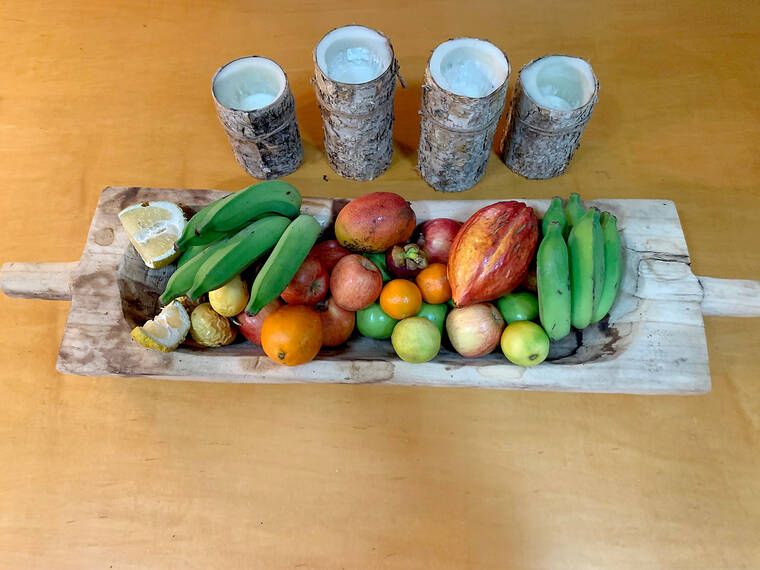Looking for a way to save on food bills? Let’s consider vegetables, herbs and spices. For many mainland folks, June is full on gardening. However, this is Hawaii and edible gardening activities can be carried out the year round.
Plantings of southern peas, lima beans, pole beans, okra, sweet potatoes, tomatoes and eggplants are keeping many gardeners in fresh homegrown abundance. Seeds of varieties suited to Hawaiian conditions are the most successful. These may be found at some garden centers and also obtained through the UHCTAHR Agricultural Extension Service offices in Kona and Hilo.
Now is also a good time to plant papayas and bananas. These plants do well near a vegetable garden since they require the rich soil and moisture for best production. They also help as a windbreak on the windy side of the vegetable patch.
Fresh herbs and spices are also natural for vegetable garden areas.
Homegrown flavor plants will add interest and piquant taste to the ordinary round of vegetables.
Most herbs plants and seeds are readily available at local garden shops. They will do well provided the soil is well drained and with sufficient nutrients. Many areas of the island have adequate soil, but organic materials like compost help to make conditions even better. In rocky areas, like Kona garden beds, it will require more effort. Some folks rely on growing in containers where soil is limited.
Warm weather types you may plant are basil, chives, oregano, summer savory, catnip, borage, lemon verbena, tarragon, mints, pot marjoram, lemongrass, vanilla orchid and edible ginger.
Basil is considered one of the finest herbs for use in pickling. It is usually of two types. These are sweet green basil and the dwarf form. A very few plants are sufficient for the needs of the average family. Sometimes one or two plants of basil may be grown in the flower border. The leaves and flowers have a clove like, spicy flavor and are prized for use in spiced vinegar, for pickles, in gravies, for soups, stews, salads, meats and fish. Basil is an especially choice flavor for tomato dishes.
Sweet green basil is just the right herb for flavoring soups.
The chive plant is the smallest member of the onion family. Its tiny bulbs grow in thick bunches, but the young tender leaves which may be cut freely are of delicate and pleasing flavor similar to that of a very mild onion. The plant grows to a height of 6-8 inches with dark green, grass-like foliage and bears pretty, violet clusters of bloom. Hence chives may be used as ornamental border plants. Chive plants are propagated by dividing the clumps and resetting in good soil.
Edible ginger, often confused with the common ornamental ginger, grows well in Hawaii and produces choice roots if given rich soil, sufficient moisture and a little shade. Ginger will long remain as one of the world’s most popular spices and should be grown in every home garden. It is an erect herb, 2-3 feet high. It grows from thickened rhizomes that branch finger-like and send up new shoots from the tips near the surface of the soil. If desired for preserving or candying, the roots should be dug while tender and succulent, rather than when old, tough and fibrous. Fresh green ginger is an indispensable part of chutneys giving them much of their spiciness and pungent flavor.
Vanilla extract is produced by the Vanilla planifolia vine. The plant originated in tropical Central America and was revered by the indigenous people of the region along with cacao. The plant is fairly easy to grow in Hawaii, but the flowers must be hand pollinated to produce the vanilla bean pods. The process for curing and preserving is complicated and takes considerable time, but it is a fun project if you are willing to take on the challenge. There are several commercial vanilla farms on our island.
Edible gardening does not end with vegetables, spices and herbs. Many beautiful trees and shrubs can also supply edible bonanzas. This year, bumper crops of lychee and mango have encouraged new homeowners to plant fruit trees.
A good source of information may be found at the Kona UHCTAHR Extension Service office in Kainaliu and at the UHCTAHR Komohana Agriculture Complex in Hilo. The phone number for Hilo is 808-981-5199 and Kona is 808-322-4893.

